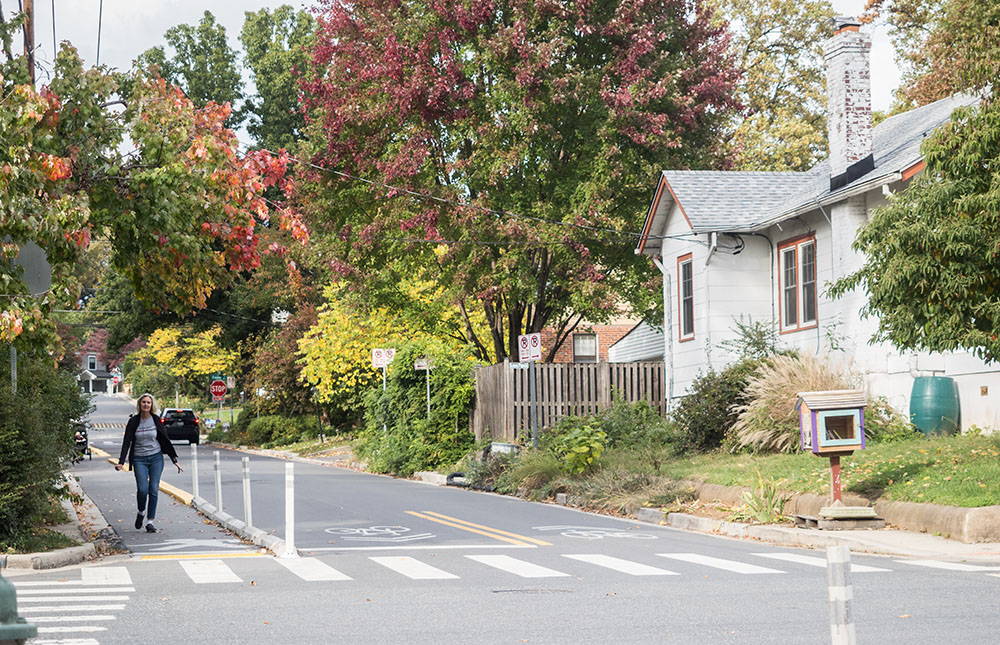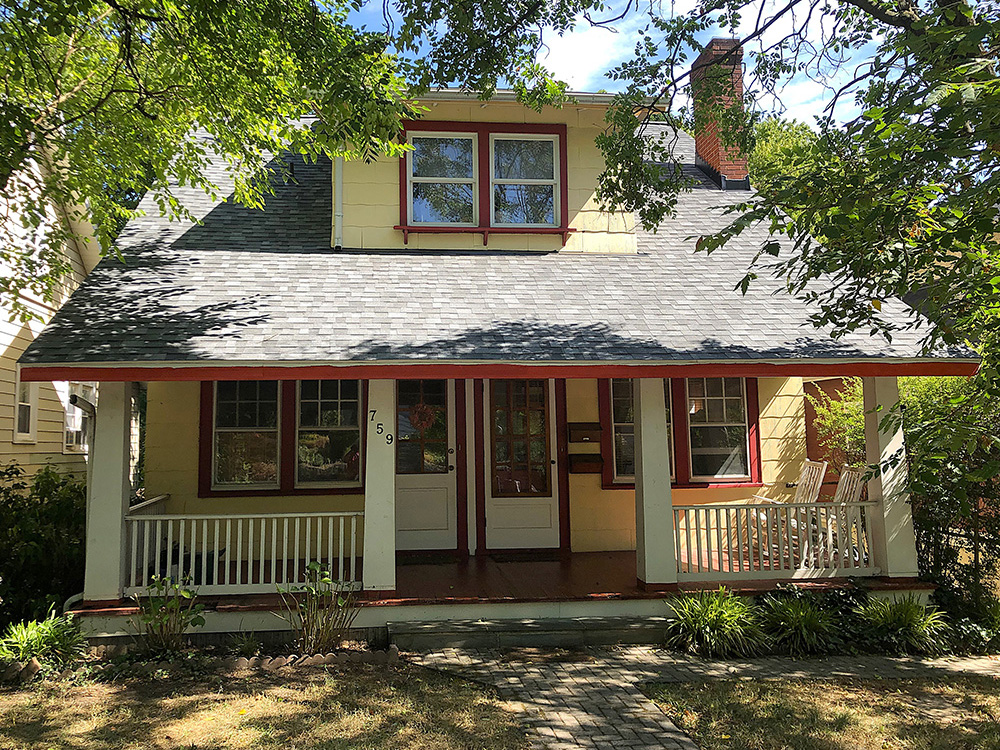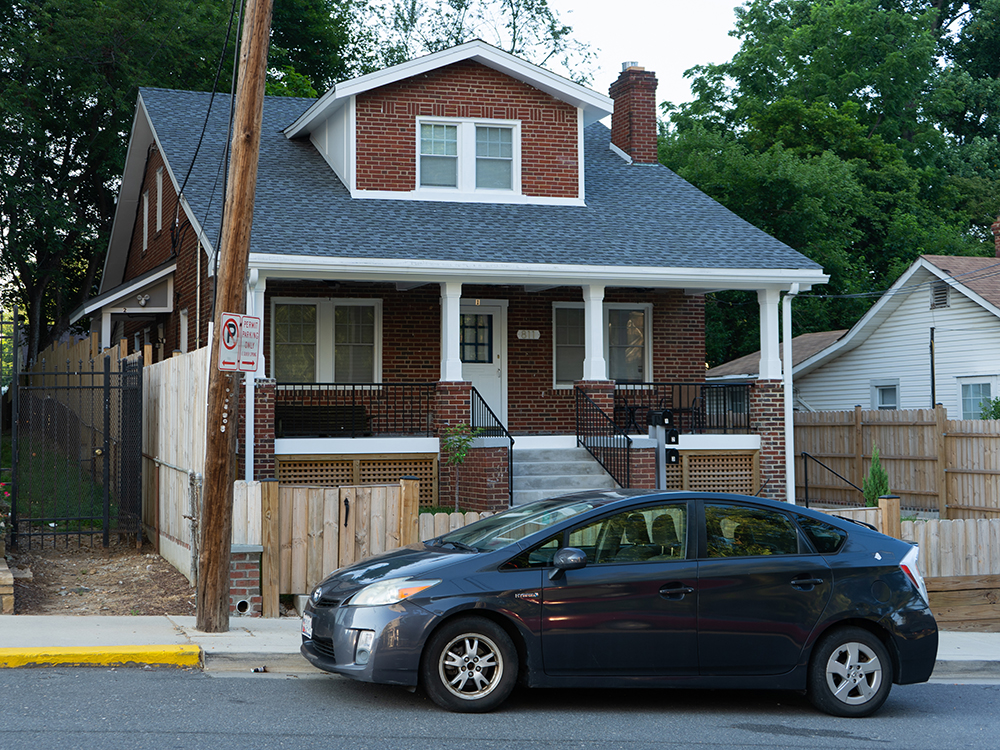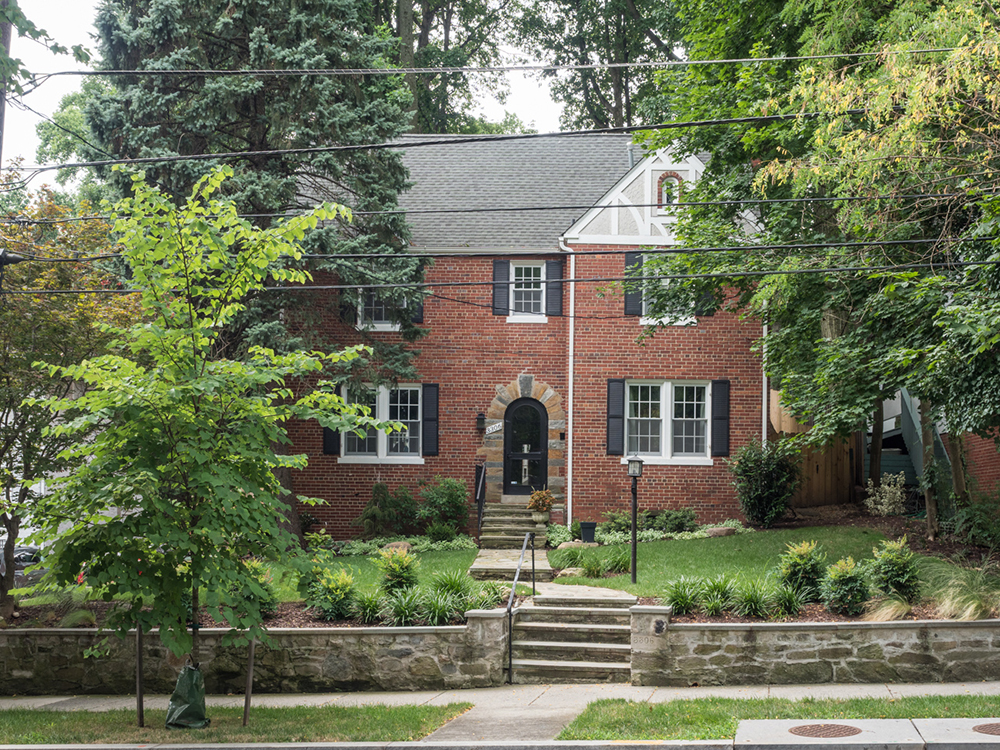
By 2034, there will be more adults who are 65 or older than children under the age of 18 for the first time in our nation’s history. People over the age of 80 will surpass 10% of the national population for the first time. In Montgomery County, estimates are that before 2040, 1 in 5 residents will be 65 or older and today, 1 in 3 are 55 or older with 9,000 people turning 65 each year. At the same time, the number of young adults without children is also growing. Although many residential zoned neighborhoods near and outside our urban centers might have benefits, they often present some challenges for aging in place with oversized houses and yards, complete car dependency, and restrictive zoning that prevents them from adapting to residents’ needs.
AARP research shows the vast majority of people over 50 want to stay in their community where they raised their family. The National Association of Realtors found in 2023 that 79% of Americans say being in a neighborhood within an easy walk of other places and things, such as shops and parks, is important. However, today in Montgomery County options for downsizing and staying in their neighborhoods are few and far between.
Many seniors want the independence of living in a house in a walkable neighborhood surrounded by people of all ages where jobs, grocery stores, coffee shops, schools, churches, and a mix of housing types are all located within walking distance – in other words, “15-minute living”. Those who seek age-restricted housing often must move outside their neighborhood to auto-dominated areas. Even with the desire to downsize, many older folks stay in their large houses because smaller housing options in walkable neighborhoods often are not available, and when they are, they are too expensive. This scenario keeps older single- or double-person households in larger homes meant for younger families with kids.
Give ‘aging in place’ a chance
 For aging adults who must remain in the large houses, scenarios such as one of them losing the ability to drive, or a spouse dying and the income dropping, or reaching the point that they can’t get up the stairs anymore, become increasingly likely. Suddenly, the dream house where a family was raised could become a nightmare. Converting large houses into two, three, or four units, or creating new house-like structures with small scale attainable housing units can provide more housing options so that people are not forced to leave their community when their housing needs change (check out Montgomery Planning’s Attainable Housing Strategies for detailed proposals on adding a wider variety of housing types in single-family zones). Living in a larger house can also lead to social isolation, which is terrible for one’s health. Bringing people closer together in smaller attainable housing homes within familiar neighborhoods adds to social inclusion and overall well-being.
For aging adults who must remain in the large houses, scenarios such as one of them losing the ability to drive, or a spouse dying and the income dropping, or reaching the point that they can’t get up the stairs anymore, become increasingly likely. Suddenly, the dream house where a family was raised could become a nightmare. Converting large houses into two, three, or four units, or creating new house-like structures with small scale attainable housing units can provide more housing options so that people are not forced to leave their community when their housing needs change (check out Montgomery Planning’s Attainable Housing Strategies for detailed proposals on adding a wider variety of housing types in single-family zones). Living in a larger house can also lead to social isolation, which is terrible for one’s health. Bringing people closer together in smaller attainable housing homes within familiar neighborhoods adds to social inclusion and overall well-being.
Allowing smaller scale attainable units in house-like structures within existing walkable, established single-family residential neighborhoods is a great solution to providing aging residents realistic options for where to live in comfort and “age in place” in their familiar community. Social safety nets can remain in place and destinations necessary for life will be closer to where one lives rather than prohibitively far away, requiring a car.

About the author
Paul Mortensen is the Senior Urban Designer in the Director’s Office at the Montgomery County Planning Department and leads the Design Excellence program. He is a registered architect in California, Washington, and Maryland, is a LEED-Accredited Professional, and is a member of the Congress for New Urbanism.



Anonymous
SURE. So you think seniors are “over-housed.” But why should we sell a lovely house we have spent decades making into what we want to move into a triplex with no yard and two other families for THE SAME COST. This is baloney and patronizing to seniors, who are too smart to buy this pitch. Be honest–you are selling us out to eliminate barriers for developers.
Anonymous
This is BS everyone knows the modus operandi is a developer buys cheap and builds big to maximize profit .
Your suggestion that grandma is going to jump through complicated construction hoops only sophisticated experts understand to stay in her hood is laughable and insulting to your readers. And where is she going to live while this renovation is going on? In the basement? No, everyone knows this is not a realistic scenario and we are not buying your sales pitch. AHS is a developer wolf in sheep’s woke clothing.
Paul Mortensen
Thank you for comment. The Attainable Housing Strategies (AHS) for small scale housing was adopted by the Montgomery Planning Board and is currently in front of the County Council for consideration. AHS recommends modifying the single-family residential zones to allow for a more diverse set of housing types, including duplexes, triplexes, and quadplexes, as well as still allowing single family homes. These new housing types would be created through renovating existing houses or by building new house-like homes that are the same scale as existing residential houses. Nowhere does AHS suggest the taking of properties or forcing anyone who currently owns a house to sell their house or to possibly renovate or build Missing Middle type housing. The recommendations that were approved by the Planning Board would allow a property owner in a single-family zone to renovate or build new units within house-scaled structures with a maximum height of 2.5 stories. These units would be smaller and more compact than a single-family house which would allow the individual unit to be rented or sold for less money than a larger detached single-family house in the same neighborhood. These units would provide more housing choices for the county’s middle-income single or double person households or empty-nester households (the two largest demographic groups in our region) to return to or stay in a neighborhood. AHS is about providing more options to both property owners and to those seeking to buy or rent a new, smaller home in our existing neighborhoods.
Tom L.
Have you forgotten about Smart Growth and the many years the County has devoted to updating the Master Plans of all the CBD areas in the County, and around future Purple Line stations? These master plan and zoning revisions were done with great care taking into consideration schools, roads/traffic patterns, parks & recreation, infrastructure impacts, and citizen input from all property owners including those living in adjoining single family residential neighborhoods.
Master Plan and zoning revisions in every CBD and planning area throughout Montgomery County over the past ten years has added millions of square feet of yet to be redeveloped density that more than address the County’s population growth and attainable housing goals. In addition, there are millions of square feet of older office building inventory situated on large tracts of land with surface parking fields that are under occupied or vacant, crying out to be converted to multi-family use or redeveloped with multi-family residential buildings, townhomes, and 2 over 2’s.
Montgomery County already has way more than enough unrealized redevelopment potential to achieve attainable housing goals, including affordable housing. This new proposal flies in the face of all the hard work the County has undertaken to update and modernize its master plans, which over time will significantly increase density around our public transportation infrastructure, including Metro stations, and planning areas adjacent to Purple Line stations. Add the redevelopment potential of the millions of square feet of existing underutilized class B and C office buildings and office building sites. The growth potential for attainable housing is already staggering.
Montgomery County needs to focus on promoting its smart growth agenda to realize its attainable housing goals. Going for more density in adjoining single family residential neighborhoods is short sighted, highly disruptive, and not smart growth oriented.
Leave well enough alone and be satisfied with the work you have already done, which is more than considerable.
Tim
More choice is exactly what we need. It’s weird living in an area with only one type of housing and smaller units, especially without maintenace and lawn care headaches can make downsizing possible without leaving the area.
And let’s not just think of Third Place as a catchy title. Zoning reform needs to include retail so we can more easily walk to coffee shops, small shops, and restaurants.
Cheryl Gannon
Your “duplex” is at 759 Silver Spring Ave and is listed on the real estate sites as a single family home with a market value of about $760,000. Do you have any data to show it’s a duplex and what the value of each unit is?
Neal Payton
Excellent proposal. So glad to see Montgomery County pursuing every possible means to ensure independence for seniors by adding to its menu of housing types in a way that allows folks access to their existing social networks. I would love to see this become a model for cities and counties around the nation. When it comes to planning policy Montgomery County has always been an innovator and this proposal continues that trend.
Larry Regan
Baloney. More spin from the Mass Transit Multi-Family Housing Complex. The single family detached subdivision is one of the most successful land uses in history as measured by the demand to live there. The savants of urban planning want to solve society’s issues, not with tax dollars, but by sacrificing the quality of life of existing residents. We need suburban preservation, not urban planning- a suburban oasis, not an urban dystopia.